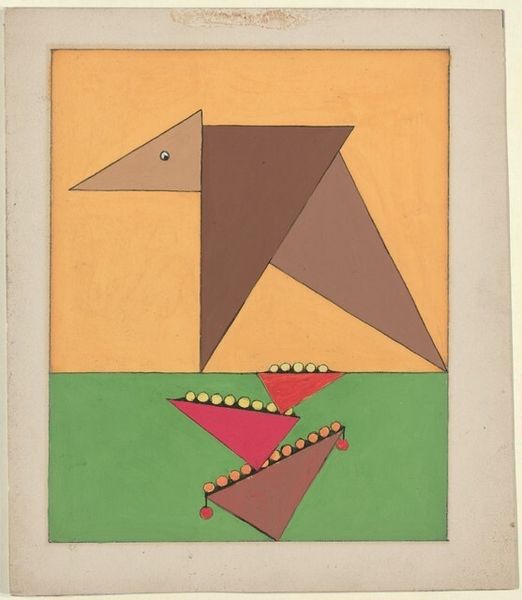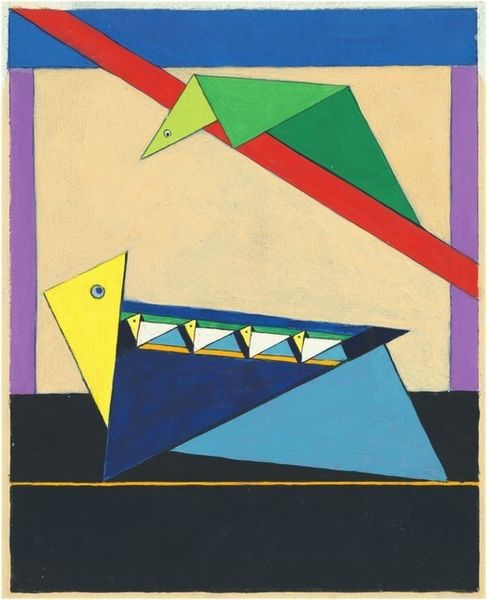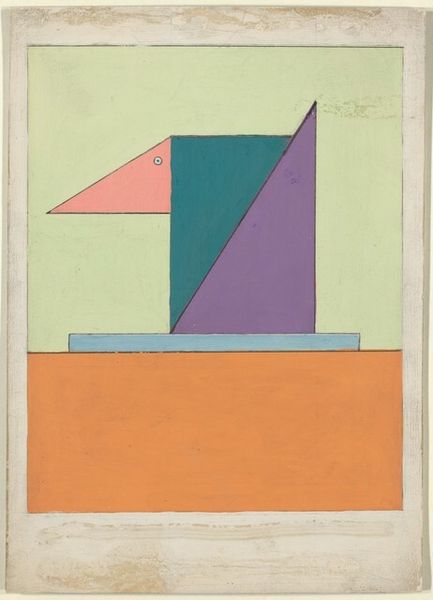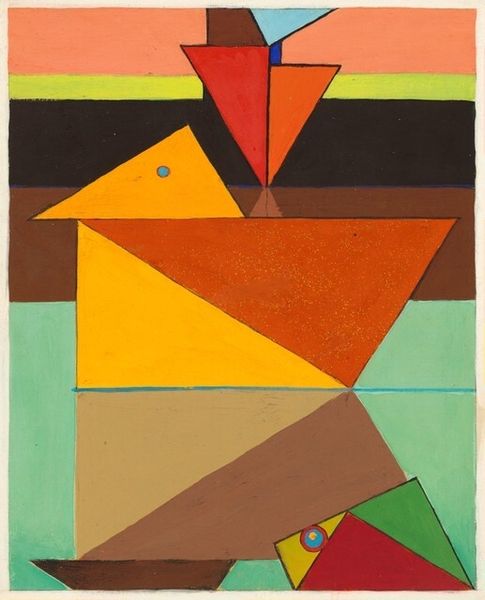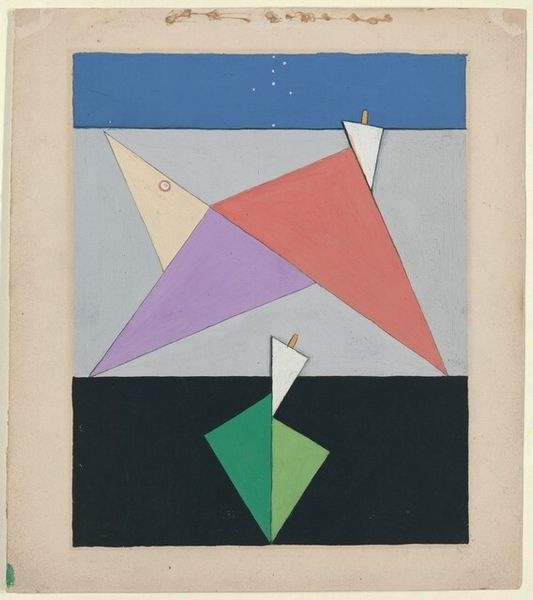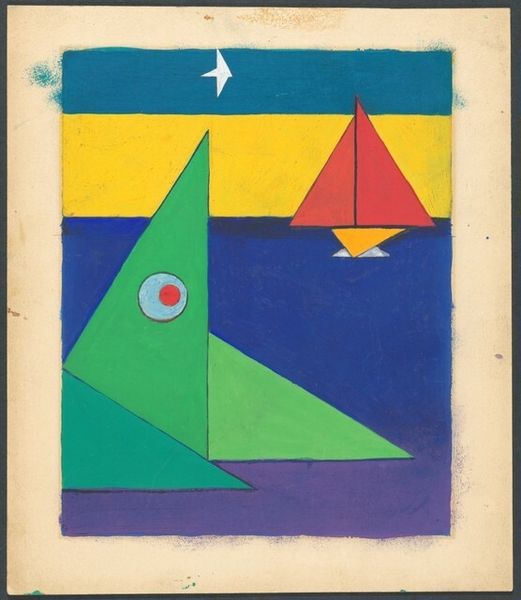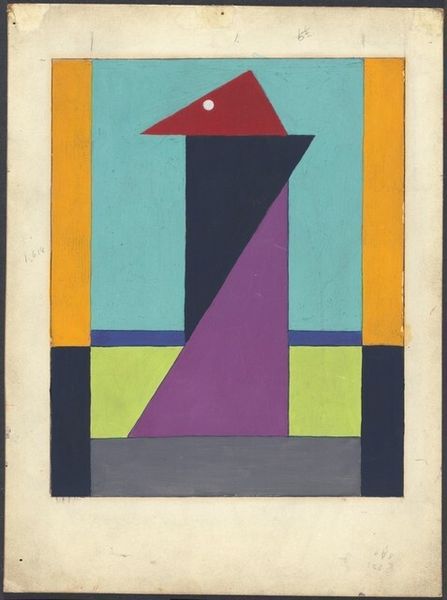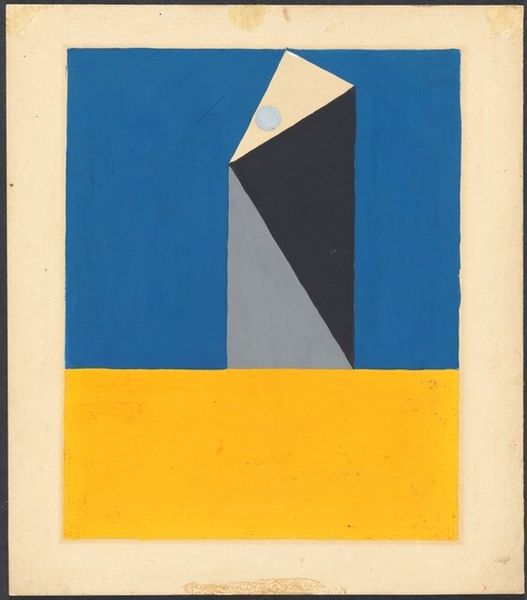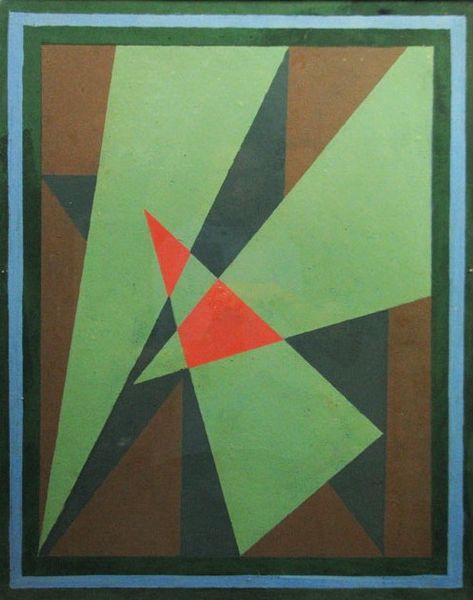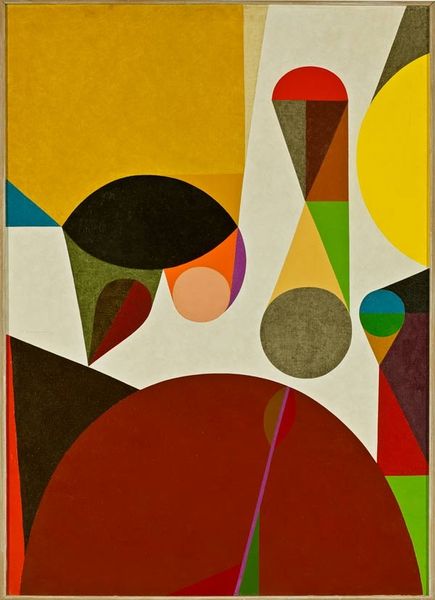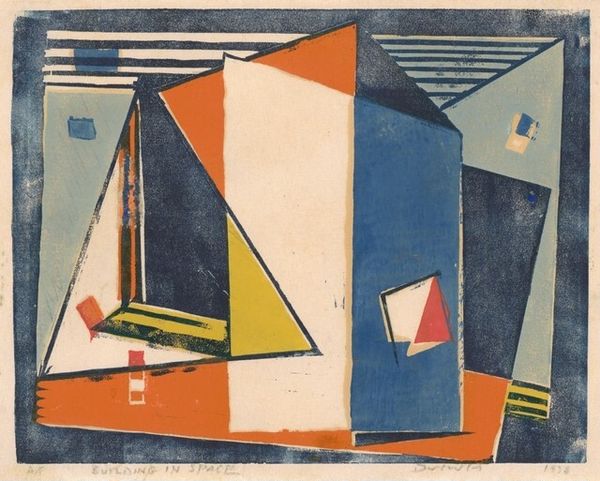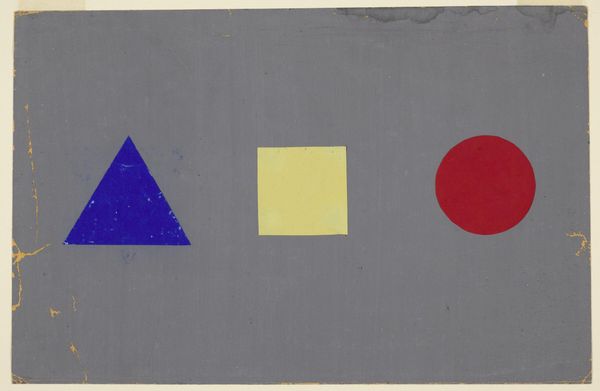
drawing, acrylic-paint
#
drawing
#
cubism
#
pop art
#
acrylic-paint
#
geometric
#
geometric-abstraction
#
abstraction
#
modernism
Dimensions: sheet: 25.4 × 18.42 cm (10 × 7 1/4 in.) image: 20 × 15.88 cm (7 7/8 × 6 1/4 in.)
Copyright: National Gallery of Art: CC0 1.0
Editor: Here we have Edward Steichen’s "The Peeping Gagaboo," made around 1922, seemingly in acrylic paint. The geometric shapes are pretty simple, but the bold colours give it a real visual punch. What do you see in this piece, in terms of its context? Curator: The interesting title certainly prompts questions. The early 20th century was a moment of intense social change and Steichen's embrace of a flattened, geometric style reflects a broader desire among artists to break from traditional representation. Cubism allowed artists to question established artistic and social norms. Consider what's missing: depth, conventional perspective. Where else did "peeping" take place at this time? Editor: So, abstraction in a way mirrored broader cultural shifts towards, perhaps, revealing hidden aspects of society? Curator: Exactly. Think about psychoanalysis gaining popularity and movements challenging social conventions. Art became a way to explore these ideas indirectly, offering visual metaphors rather than explicit commentary. Also, did modern marketing influence modern art with its reductive imagery? Editor: That’s fascinating. So "The Peeping Gagaboo" is engaging with major cultural trends while questioning how art should represent the world? Curator: Precisely. It becomes a kind of visual puzzle, inviting us to question what we see and how art shapes our understanding. Museums frame what we see and do not see in these images. Editor: I hadn’t considered that connection between abstraction and societal shifts so explicitly before. It makes the piece far more compelling. Curator: Absolutely. Art's power resides in its ability to spark dialogue and challenge the status quo. It offers insight into socio-historical moments.
Comments
No comments
Be the first to comment and join the conversation on the ultimate creative platform.

